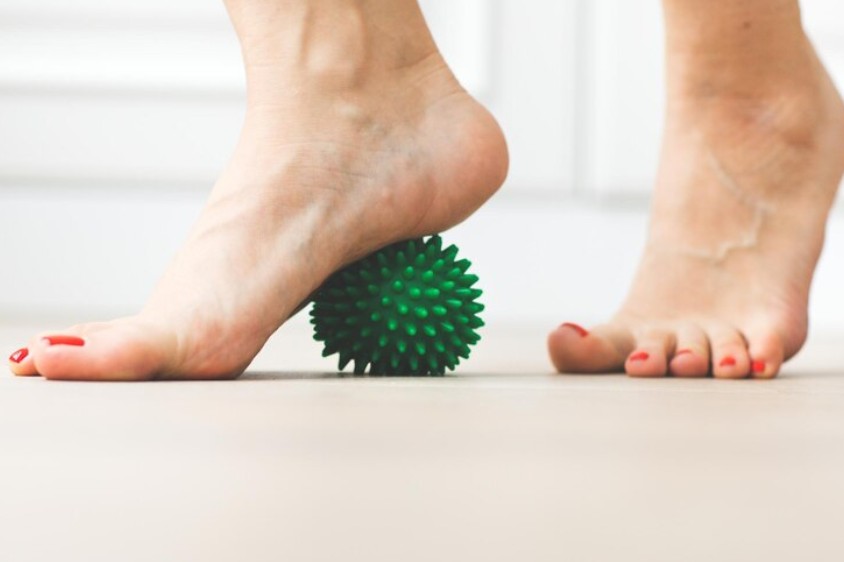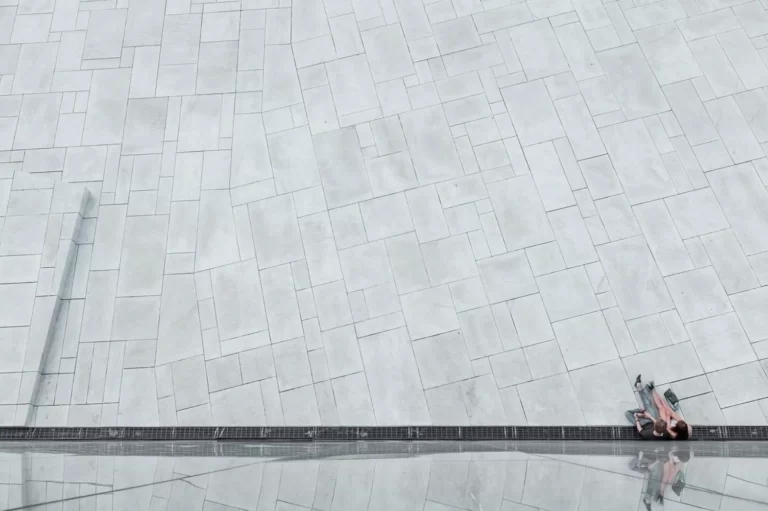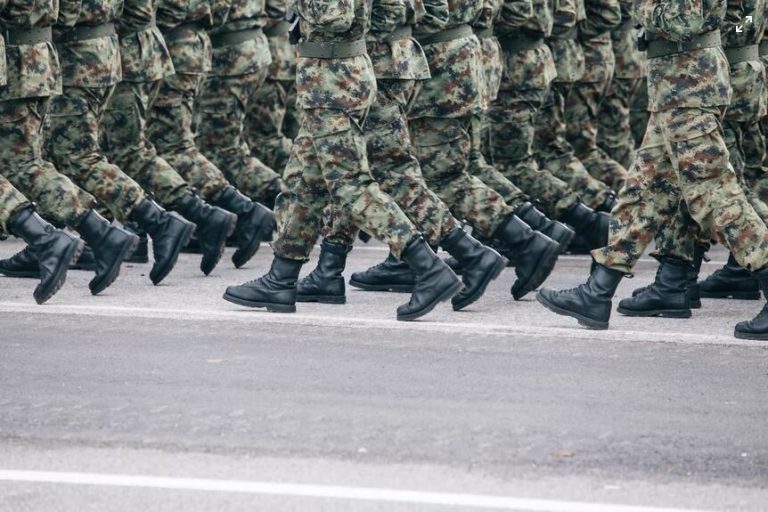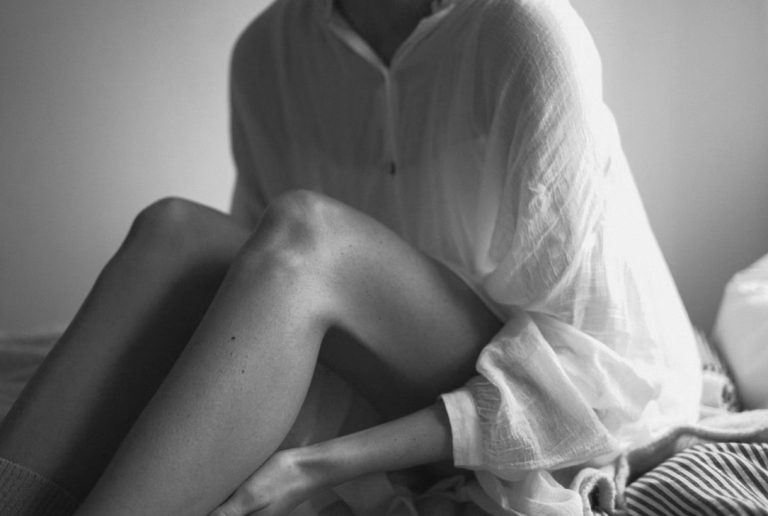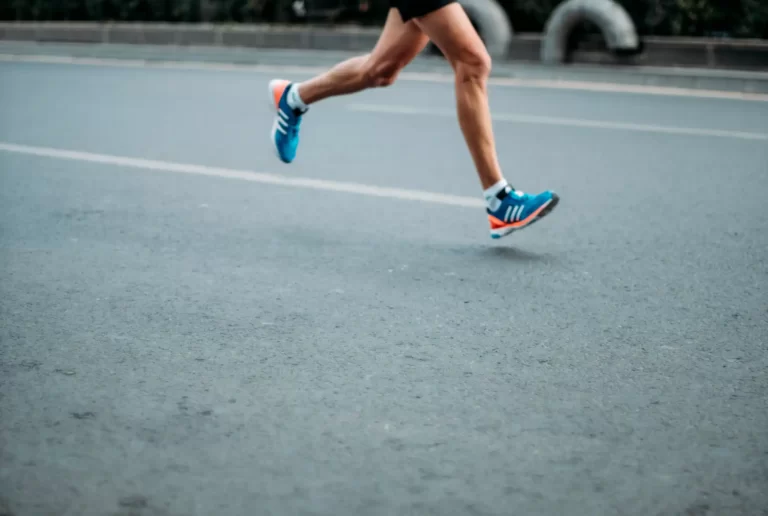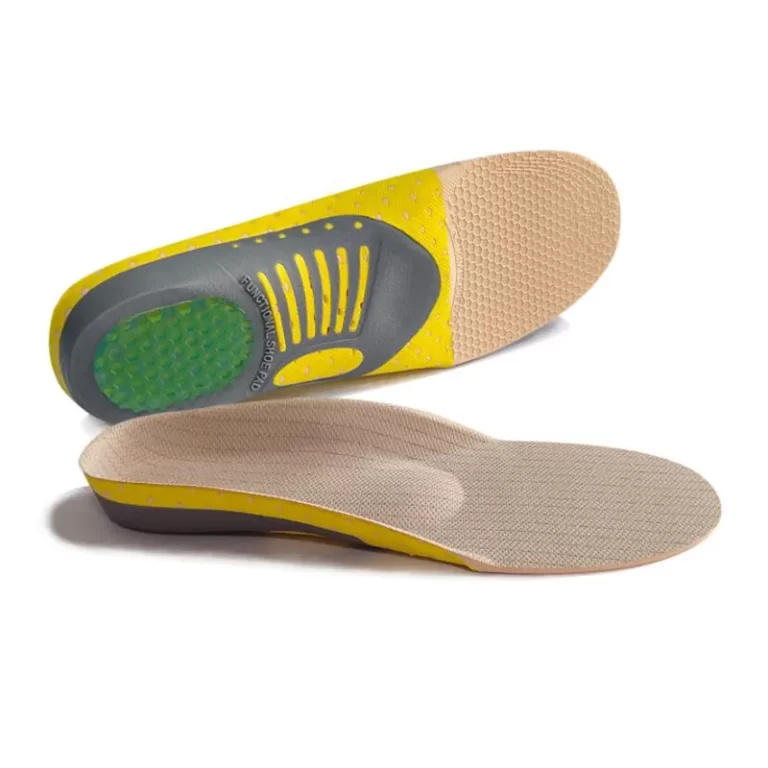5 Best Reflexology Foot Massagers – Why You Need One
Reflexology is an ancient system of non-invasive therapy that uses pressure points in the feet to balance and restore the flow of energy in your body. It’s been around for hundreds of years, but it’s still evolving as we learn more about how the body works through scientific research. Reflexology can help with many chronic conditions like diabetes and arthritis, as well as treat more acute issues like headaches and muscle pain.
What is reflexology?
Reflexology is a form of foot massage that is supposed to help the body heal itself. The practice is based on the idea that there are points on the feet and hands that correspond to different parts of the body.
In reflexology, a therapist uses their hands or thumbs to apply pressure to these areas, often using oil or lotion when doing so. The theory is that this stimulates nerve endings located under your skin that send signals back up through your nervous system in order to bring about healing benefits for various ailments.
However, some experts question whether there’s any proof behind reflexology’s alleged efficacy as a treatment for anything beyond tired feet or sore muscles: “There were no observed changes,” concluded one study from 2012 (link below).
Where did reflexology come from?
Reflexology was invented by a man named Dr. William Fitzgerald, who was a doctor in the U.S. in the 19th century. Fitzgerald was a brilliant man and he also had an interest in spiritualism, which is the belief that spirits are present in all things around us; they can be good or bad, but it’s important to maintain positive relationships with them.
The concept of reflexology got its start when Dr. Fitzgerald decided to look for scientific explanations for some of his healing methods—not only because he wanted to show people how effective they were, but also so that other doctors would take them seriously too (back then there were fewer doctors than there are today).
How does reflexology work?
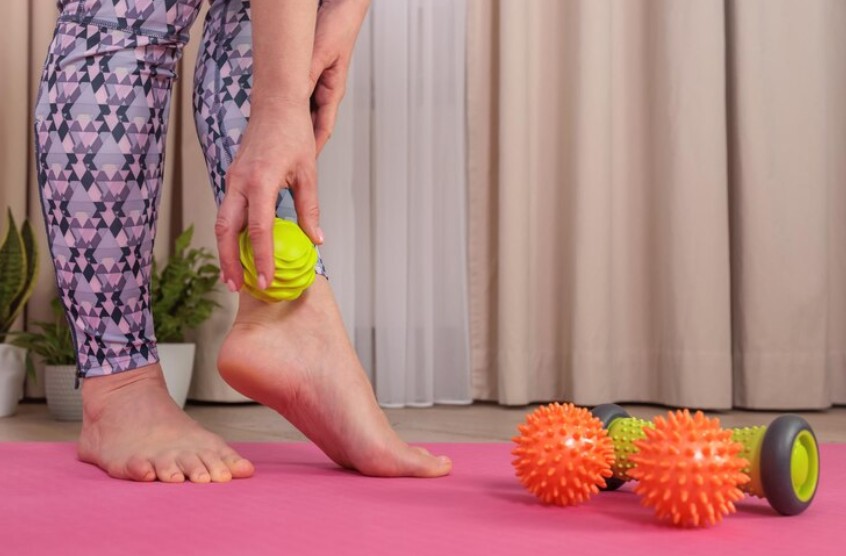
Reflexology is a form of alternative medicine that involves the application of pressure to the feet and hands. The concept behind reflexology is that there are many reflex points in the hands and feet that correspond to organs, glands and other parts of the body. These points are connected through nerve pathways, so stimulating them can improve health by helping your body work more effectively.
When you receive a treatment from a professional, they will usually include some sort of massage or pressure on these areas as part of their routine. This may involve rubbing or pressing on specific points for short periods of time (usually less than 30 seconds), which is supposed to help with circulation as well as ease pain in those areas.
Is it scientifically proven?
There have been several studies that look at the effectiveness of reflexology, but not enough for it to be conclusive. Some studies show positive results, while others say it doesn’t work. The problem is that these studies rely on self-reporting from patients and can’t be controlled as well as a clinical trial would allow. Because of this, it’s difficult to prove whether or not reflexology actually works.
The evidence isn’t strong enough yet for the medical community to accept it as treatment for anything other than stress management (which is why you’ll see many practitioners offering massages alongside their treatments). It may take more research before we know whether or not there are significant benefits to receiving reflexology treatments regularly—but if you decide to try out this practice yourself and experience any positive effects, then go ahead and give yourself some credit!
How can it help me?
As you can see, there are a variety of ways that reflexology can help. Reflexology is especially effective for stress, anxiety, depression and insomnia because it stimulates the production of endorphins in the brain. It also helps get rid of pain and inflammation in the body. The pressure points on your feet correspond to areas in your body (including internal organs) which means that when you press on these specific points with your thumb or finger nails it helps alleviate pain from illnesses like arthritis or carpal tunnel syndrome.
Reflexology has also been shown to be effective at treating digestive issues such as nausea and constipation by helping relax the muscles associated with digestion while increasing blood circulation to this area of the body which allows nutrients easier access into cells where they are needed most.
How Reflexology Differs From A Foot Massage
Reflexology is a type of foot massage that focuses on specific areas of the feet to improve overall health. Reflexology is one of the oldest forms of alternative medicine, with records dating back as far as 3000 BC. A reflexologist uses pressure and movement to stimulate energy flow in specific areas on your feet, hands, head and ears. The goal of each session is to balance the body’s energy levels so your overall health can be improved by reducing stress and pain.
Reflexology is a different method than a foot massage.
Reflexology is a holistic treatment that uses the feet to access and treat the body. It’s similar to massage therapy in that it uses pressure to stimulate nerves and muscles, but reflexologists use an alternate method called zone therapy to determine which areas of the body need attention.
The foot massage is a relaxation treatment that focuses on relieving stress from your day by focusing on your feet. The goal with this type of massage is not necessarily healing any injuries or ailments in your body, but rather just relaxing you so you can go about your day feeling refreshed and renewed.
A foot massage focuses on the soft tissues in the feet.
A foot massage is usually done with a brush or small stick, and focuses on the softer tissues in your feet. It’s not uncommon to see people getting a foot massage after they’ve been on their feet all day, as it helps improve blood circulation and reduce stress. The two types of massages are often confused by people who don’t know much about them, but they’re very different treatments that can both be beneficial for your health.
Reflexology has been used as an alternative medicine for thousands of years.
Reflexology has been used as an alternative medicine for thousands of years. It’s based on the theory that the feet are connected to all parts of the body via energy channels, and that pressing or massaging certain areas on your foot can stimulate different organs or systems in your body.
The earliest evidence of reflexology comes from ancient Egypt, where it was documented as early as 1550 BCE by Imhotep, who was a high-ranking general and doctor to Pharaoh Djoser (reign: 2620–2590 BCE). In addition to writing about it in his books, he created sculptures and carvings that illustrated his work with hands-on healing techniques—including those typically associated with reflexology.
A reflexologist uses specific movement and pressure to stimulate energy flow.
Reflexology is a holistic treatment that addresses the entire body, not just the feet. Reflexologists use pressure points on your feet to stimulate energy flow and promote health in other parts of your body. This can be done through different techniques such as gentle kneading or rolling balls across the bottom of your foot; however, it’s important to note that there are no deep tissue massages involved in reflexology—just light pressure applied with a specific movement pattern.
In addition to using specific movements and pressures on different areas of the foot, reflexologists often employ an array of tools at their disposal including but not limited to: massage stones; a spring-loaded tool called a tuning fork which helps clients experience vibrations as they’re pressed into certain parts of their bodies; an instrument known as “The Golden Egg” which allows practitioners access inside cavities within bones without harming surrounding tissue structures within those cavities (think x-rays).
All together these techniques combine together while being used simultaneously by one person onto another person’s entire body (not just their feet) in order for them both parties’ optimal health benefits—which might include reduced inflammation levels or increased blood flow throughout various organs like kidneys and livers!
The goal of reflexology is to restore balance and wellbeing.
Reflexology is very different from a traditional foot massage. The goal of reflexology is not to simply relax you or give you a soothing rubdown, but rather to restore balance and wellbeing by stimulating the feet’s pressure points.
A typical session of reflexology lasts around 60 minutes, during which your feet will be gently massaged and pressed in order to stimulate certain areas of the body that correspond with certain organs or systems (such as the heart). By doing this, practitioners can help relieve pain and stress throughout the body, improve immune function and circulation, improve sleep quality (which often leads to better digestion), reduce inflammation in joints or muscles—the list goes on!
Regular reflexology sessions can improve overall health and reduce pain.
Reflexology is also used to treat a variety of conditions, including:
- Muscle aches
- Back pain and joint pain
- Headaches and migraines
- Digestive problems like constipation or diarrhea
Always consult your doctor before starting any new treatment!
Reflexology is a treatment that has been practiced for thousands of years. As with any health-related topic, it’s important to consult your doctor before starting any new treatment regimen. Reflexologists are not medical professionals and they should not be confused with trained physicians or practitioners who have gone through the rigorous coursework necessary to become licensed in their state. If you are considering reflexology as part of your healthcare plan, please do so under the guidance of an appropriate healthcare professional.
What Are Reflexology Foot Massage Benefits?
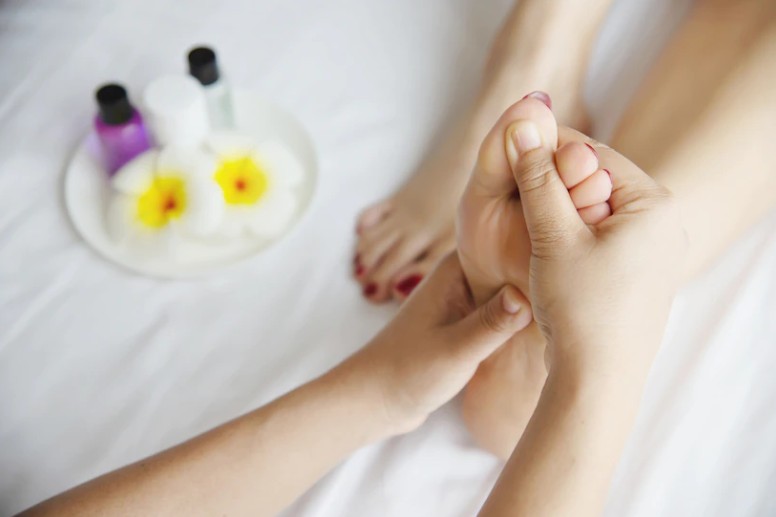
Here are some great benefits of reflexology foot massage:
- Refreshes your mind and body by relieving stress and anxiety
- Helps you sleep better, so you can have a more balanced mood the next day
- Reduces other mental conditions such as depression, migraines and headaches (especially those caused by stress)
- Relieves digestion problems like acid reflux or constipation by relaxing the stomach muscles to allow food to pass through smoothly
- Can help with circulation issues in the legs due to poor blood flow
What Are The Best Reflexology Foot Massager
Are you Looking for the best reflexology foot massager?
Reflexology is a form of alternative medicine that claims to treat the body through the feet. It involves massaging pressure points on the soles of the feet, which are said to correspond with other parts of the body.
The best foot massager for reflexology will mimic these techniques, allowing you to perform some basic reflexology techniques in your own home without any special training or equipment. This can be useful if you don’t have access to professional care (or want to save money!) but still want some relief from pain caused by tight muscles in your feet or legs.
HoMedics FMS-270H Deep Kneading

One of the best foot massager on the market is HoMedics FMS-270H Deep Kneading Foot Massager. This product has three massage patterns that you can use. You can choose between a rolling, kneading and tapping action to suit your needs. The HoMedics FMS-270H Deep Kneading Foot Massager features two rolling nodes that are designed to provide a deep massage for your feet, as well as kneading nodes for further relief from tension in your feet. This product has an auto shut off timer of 30 minutes so you don’t have to worry about keeping track of time while using this item.
The HoMedics FMS-270H Deep Kneading Foot Massager offers four intensity levels so that you can customize the massage experience according to your preferences or needs. This feature makes it one of the best options on the market today because not everyone enjoys having their feet massaged at exactly the same speed or intensity level all the time! For example; if someone wants more intense pressure applied during their session then they simply turn up its intensity level until they feel comfortable before starting again later on down another path depending upon what works best for them individually! It doesn’t get any easier than this folks!
Belmint Shiatsu Foot Massager

This foot massager has 4 massage nodes that work together to provide a deep penetrating Shiatsu massage. You can choose from 2 speeds for the rolling and kneading nodes, as well as 1 heat option for soothing your feet.
The battery lasts up to an hour on low speed and 40 minutes on high speed, which is plenty of time for one session. The massager weighs less than 2 lbs and measures 8×6 inches so it’s easy to carry around with you when traveling or relaxing in bed at night.
The Belmint Shiatsu Foot Massager costs $80 online but can be found for less if you watch for sales or coupons!
Nekteck Foot Massager, Shiatsu Heated

This foot massager is a great choice for anyone who wants a massage that covers the entire foot. It has three massage modes: Relaxing, Massaging and Deep Kneading. The rollers are designed to provide deep kneading pressure to help your feet relax, especially if you suffer from plantar fasciitis or other related problems. This model also comes with heat which can be adjusted according to your preference and needs. This makes it easier for you to enjoy your treatments even more!
This product is portable so it’s easy to take anywhere with you on trips or vacations (or just in case). You don’t need an outlet either; this device operates using batteries so no matter where you go there will always be power at hand! This product also has USB charging capabilities; meaning that if there isn’t any place nearby where we can plug in then we won’t have any issues because all we have do is plug into any computer via USB cable instead!
Miko Shiatsu Home Foot Massager

Miko Shiatsu Home Foot Massager is a perfect tool for relaxing tired feet. This foot massager has a heat function, timer and massage intensity adjustment. It also has a massage direction adjustment and speed adjustment which can be operated by the remote control or manually. The heat function works by turning on 3 LED lights that show you how hot it is getting inside your unit. You can control how much heat you want as well as when it turns off with the adjustable thermostat buttons on top of your unit.
TheraFlow Dual Foot Massager Roller

The TheraFlow Dual Foot Massager Roller is a dual action massage roller, designed to massage the arch of your feet. It has an adjustable heat function that allows you to choose how warm you want your massages. The product comes with 2 AA batteries, but it also includes an AC adapter if you prefer plugging into a wall outlet instead of using batteries.
It has a timer feature so you can set the amount of time that it runs for, and it’s also portable and easy to travel with as well! You’ll love how this massager works on your arches and heels while giving them a relaxing massage that feels great after a long day at work or school!
Choose foot massager according to your needs and budget.
With a lot of options for best foot massagers in market, it is quite difficult to choose one among them. We have reviewed the best foot massager for your home and you will get the best results. You can choose the best one according to your budget and needs.
Things To Know Before Your Buy Massager Machine
Reflexology is a form of alternative medicine, based on the idea that “the body contains an energy map of its internal organs, tissues and systems” and that “a reflexologist can detect these areas by applying pressure to certain points on the feet.” Reflexology is often used to treat pain and stress. There are many different ways to give yourself a foot massage with Reflexology, but one way involves using a Reflexology Foot Massage. These have become popular because they are easy to use and comfortable, unlike other types of foot massagers. Here’s what you need to know before buying yours:
Check the Reflexology Foot Massage is easy to use.
It’s important to make sure the Reflexology Foot Massage is easy to use before you buy it. Make sure it offers all of the options you want, including:
- It’s easy to clean. You don’t want to spend money on something that’s going to be a hassle. Any product that can’t be cleaned quickly and easily doesn’t belong on your shelf!
- It’s easy to set up/take down. If you’re anything like me, then you might not have time for complicated equipment in your life! That’s why I prefer products that require little setup time or no assembly at all—I just want something simple, straightforward and effective (like this one). And when it comes down time for storage, I need something compact yet durable enough so it won’t fall apart while being moved around my house or stored away somewhere safe while not in use (which is why I recommend this one). This kind of convenience means less stress; which means more relaxation!
Make sure the foot massager machine is comfortable and adjustable.
Before you make the purchase, it’s a good idea to ensure that the Reflexology Foot Massage is comfortable and adjustable. After all, you’ll be using it for an extended period of time during your massage session. You want something that will be easy to use as well as ergonomic so that you won’t experience pain while using it.
When choosing what brand of Reflexology Foot Massage to buy, look at reviews online. While this type of product isn’t going to have hundreds or thousands of reviews like other types of items do, there should still be enough user feedback online so that you can get an idea about how people feel about the product before purchasing one yourself.
Check that the Reflexology Foot Massage has a nozzle that will fit your feet.
As a general rule, the Reflexology Foot Massage nozzle should be flexible and easily attachable, so that it can fit on different types of feet. The nozzle itself should also be easy to remove once you’re done with your foot massage. If this is not the case, then it may be difficult for you to get a good experience using the Reflexology Foot Massage.
Consider having a lot of Reflexology Foot Massage features.
There are many reflexology foot massage features, and each person has their own preferences. Some prefer a simple device that just massages the feet, while others may want to use one that regulates sleep cycles or even has a built-in tracker. Before you buy your next reflexology foot massage, make sure you understand what features are important to you and which ones aren’t.
Figure out what the best Reflexology Foot Massage offers.
The best Reflexology Foot Massage is the one that works best for you.
It’s important to figure out what kind of product you should buy, but it’s also important to make sure that the item is suitable for your needs and lifestyle. There are many factors to consider before making a purchase decision, so let’s take a look at some of the most important ones:
- What type of Reflexology Foot Massage do you need?
- Do you want a machine or an electronic massager? If so, what features does it need have? How much do they cost?
- Do you want something portable? Will it be easy to store away when not in use? Can it be used in multiple locations (such as at home or while traveling)? How often will people use this type of product throughout their day or week?’
Conclusion
Reflexology is a massage that works with the way your body’s energy flows. It works by applying pressure to specific points on your feet, hands, and ears that correspond to other parts of your body. The idea behind reflexology foot massage is that by pressing into certain areas on the foot, you can help relieve tension in other parts of your body.
The best thing about using a Reflexology Foot Massage is that there really isn’t any wrong way to do it! The most important thing is just paying attention to how this type of treatment makes you feel afterwards – are there any areas where more work needs to be done? Are there any spots where things felt especially good? If so then they might be worth focusing on next time around as well!

